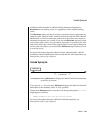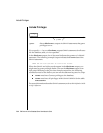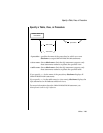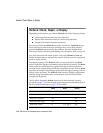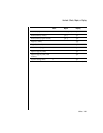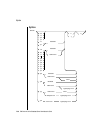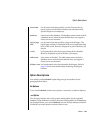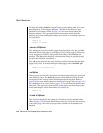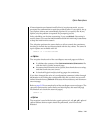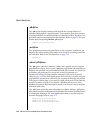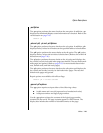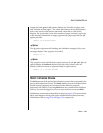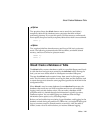
Utilities 7-41
Option Descriptions
If inconsistencies are detected and OnLine is in quiescent mode, you are
prompted for confirmation to repair the problem index. If you specify the -y
(yes) option, indexes are automatically repaired. If you specify the -n (no)
option, only the problem is reported. No prompting occurs.
Index rebuilding can be time-consuming if you use tbcheck. Processing is
usually faster if you use the DROP INDEX and CREATE INDEX SQL statements
to drop the index and re-create it.
The -cI option performs the same checks as -ci but extends the consistency
checking to include the rowids associated with the key values. The same -ci
repair options are available with -cI.
tbcheck -cI -n stores5:customer
-cr Option
The -cr option checks each of the root dbspace reserved pages as follows:
■ It validates the contents of the $INFORMIXDIR/etc/$TBCONFIG file
with the PAGE_CONFIG reserved page.
■ It ensures that all chunks can be opened, that chunks do not overlap,
and that chunk sizes are correct.
■ It checks all logical and physical log pages for consistency.
If you have changed the value of a configuration parameter (either through
DB-Monitor or by editing the configuration file) and you have not yet reini-
tialized shared memory, tbcheck -cr detects the inconsistency and returns an
error message.
Refer to page 2-95 for a complete list of the root dbspace reserved pages. (The
-pr option performs the same checks and also displays the reserved-page
information as it checks the reserved pages.)
tbcheck -cr
-n Option
The -n option is used with the index repair options (-ci, -cI, -pk, -pK, -pl, and
-pL) to indicate that no repair should be performed, even if errors are
detected.



